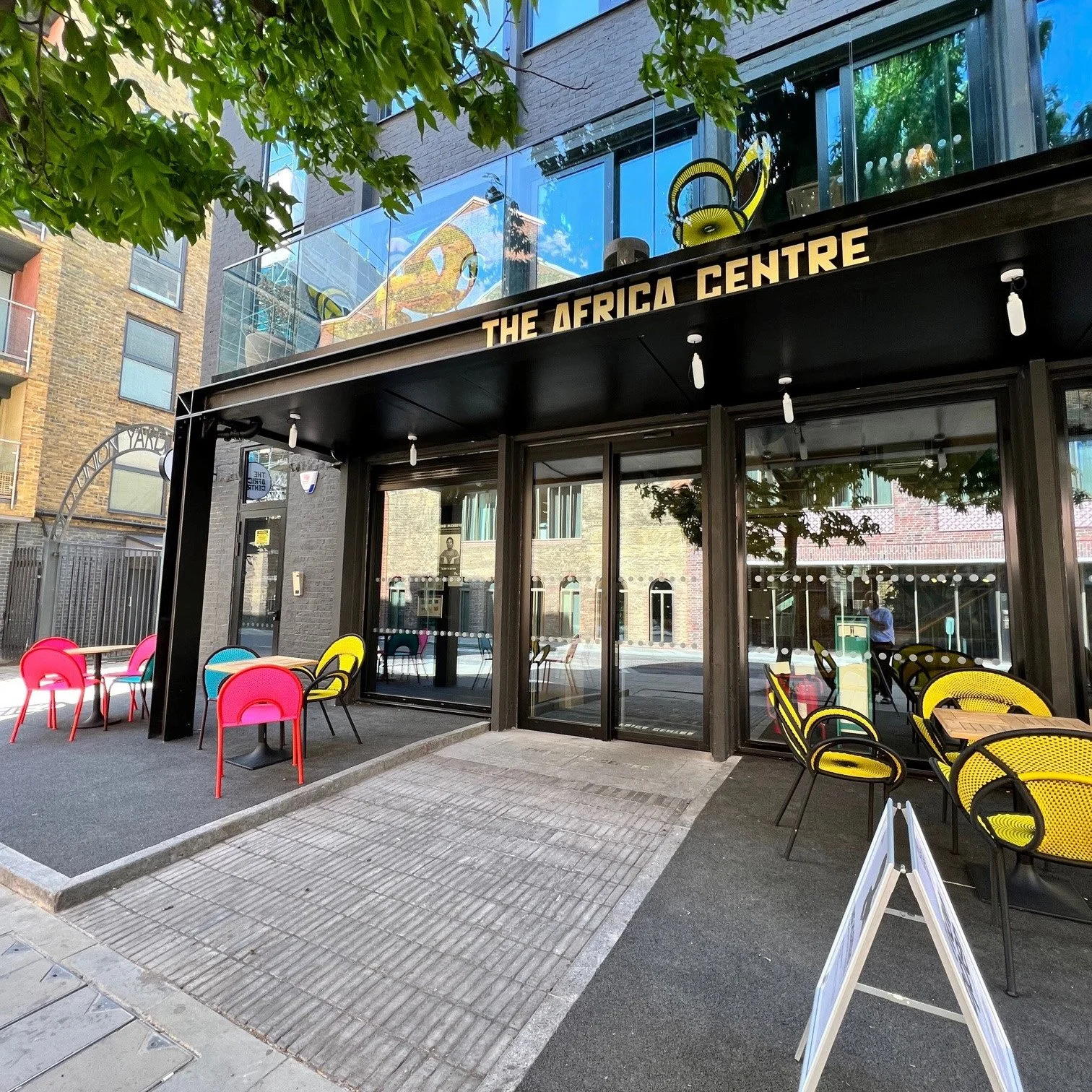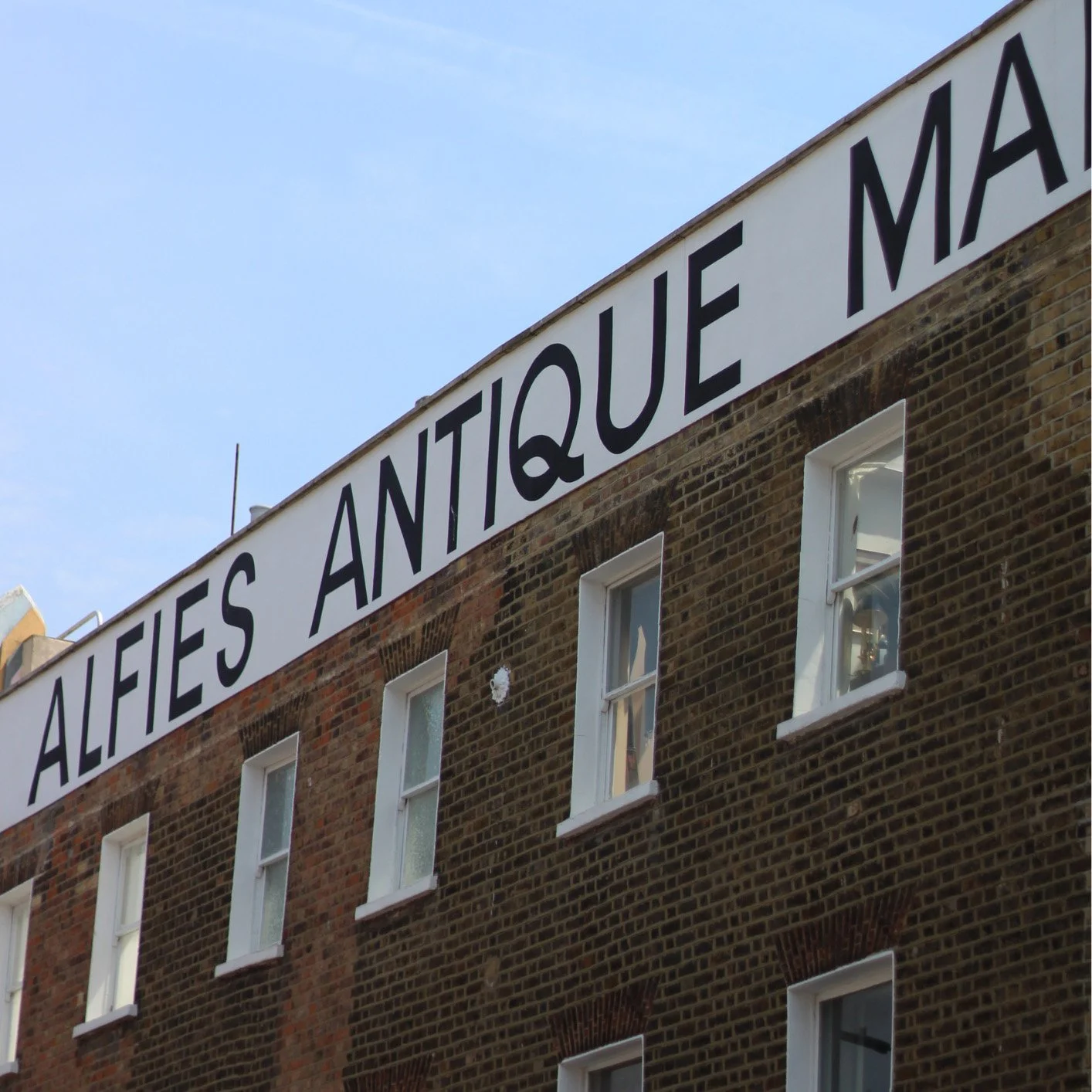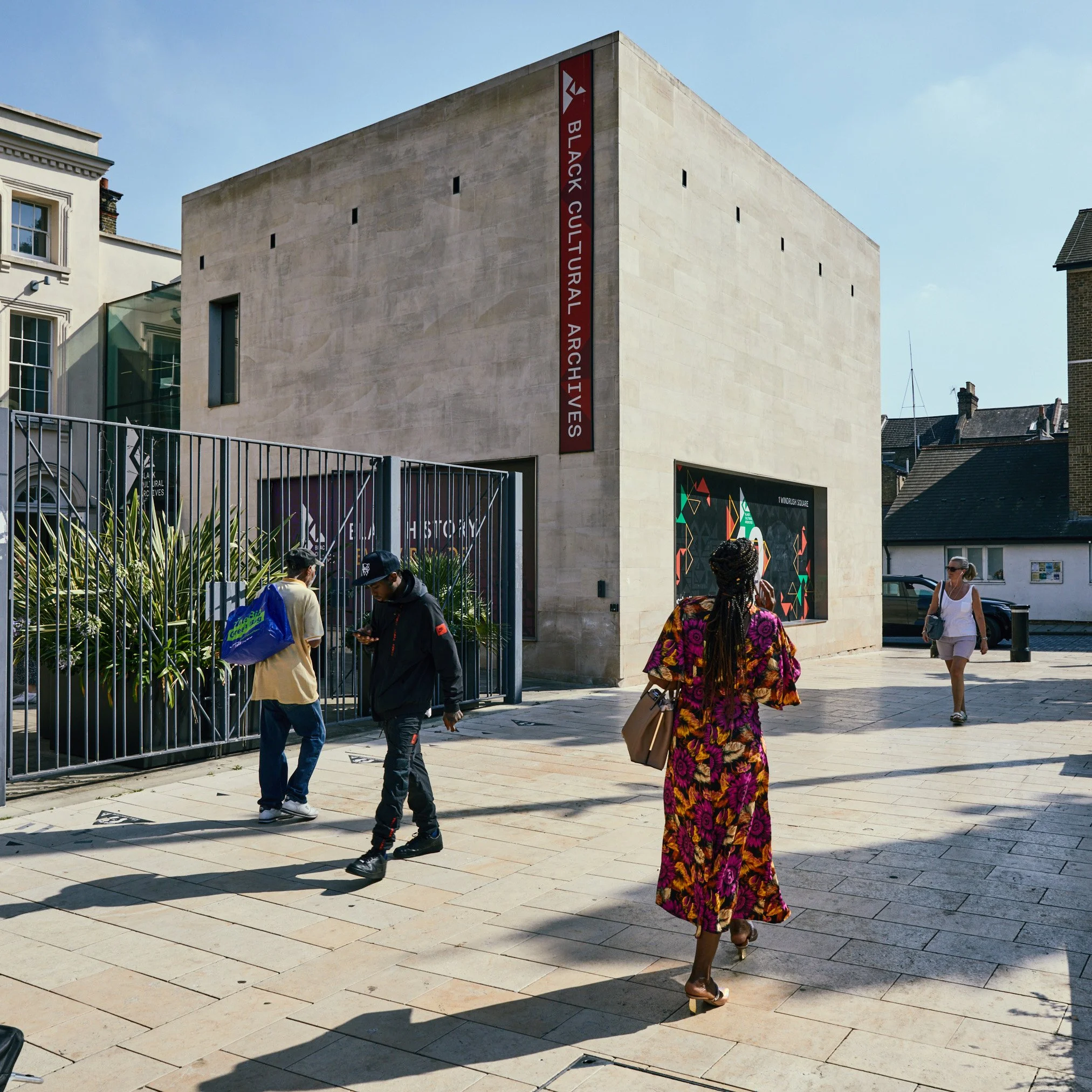African and SWANA Third Spaces curated by Space Black
Architectural Designer & Visual Artist Rayan Elnayal alongside Civil Engineer and DJ Heba Tabidi’s response to resist the structures and institutions that govern the built environment profession in the UK is Space Black. The studio explores underrepresented and under resourced ideas in the built environment. Together they imagine alternative spatial futures for marginalised communities, by combining their Sudanese identity, diasporic experience and technical training.
The collection delves into the network of Afro-Arab third places nestled within London's urban landscape. These curated spaces span a diverse range of architectures, each uniquely adopted and adapted to foster communal gathering and cultural exchange.
This 110-year-old market is a cornerstone of the West London community, cherished for its rich cultural heritage and vibrant community of traders. Offering everything from food and textiles to tailoring services, it has been a hub of affordable, quality goods for generations. Many of the traders have been part of the market for decades, deeply rooted in the community and committed to serving it. Their dedication has created a special place where local residents can access a diverse range of products and services at fair prices. This market has not only sustained livelihoods but has also supported the African and SWANA communities, fostering a unique and sustainable trading environment. We hope the new development will preserve and enhance the market's enduring legacy and the vital role it plays in our community.
Space Black is excited to be facilitating a walking tour of the market with staff from Shepherd's Bush Market.
2. The Africa Centre
Established in 1964, the Africa Centre has long served as a non-governmental space for the African diaspora to discuss ways to educate, connect, and advocate for Africa and its people. Originally located in Covent Garden, the Centre moved to Southwark, where in 2019, Freehaus was appointed to retrofit the 1960s Gunpowder House office building into the beautiful space it is today. This five-storey building has since become a beacon for intergenerational African communities within the British diaspora, hosting a multitude of events that showcase and support the creativity of our community. It was the perfect venue for our ‘Sense of Home’ event, which celebrated African creatives across various art forms, including music, visual arts, architecture, scent design, and culinary arts.
3. Alfie’s Antiques
Alfies/Alfayez Antiques, one of Europe’s largest indoor antique markets, is a hidden gem. Its facade is a unique blend of Art Deco features, with Ancient Egyptian motifs on one side and a Gustav Klimt painting on the other. The interiors are equally enchanting, featuring an indoor pond and glass units that serve as office spaces, stores, and mini museums. The Alfayez section, its Arabic name, is predominantly occupied by Middle Eastern dealers who sell everything from Islamic art and Persian rugs to antique jewellery.
Historically, this building and its business model have supported dealers by allowing them to start small in the sought-after location of Paddington. Over the years, Alfies/Alfayez dealers have expanded their businesses into units right across the street. This culture has fostered a community of dealers with impressive collections, creating a strong sense of camaraderie as they take care of each other's collections. Like many of the spaces in our curated list, Alfies/Alfayez is one we believe deserves more recognition. We can't wait for people to visit and rediscover their love for London, even in these challenging times.
4. Toteil Restaurant
Toteil Restaurant, named after Mount Toteil in Kassala, Sudan, is one of the very few Sudanese restaurants in London. They serve authentic Sudanese cuisine with an extensive menu that includes dishes like Kisra; a fermented flatbread made with sorghum and millet, and Agashe; grilled meat coated in peanut butter and chilli. The restaurant, which opened in April 2024, launched amidst Sudan’s ongoing war. Through our curation this year, we aim to celebrate Sudanese excellence and culinary heritage.
The Sudanese experience encompasses more than just war and suffering; experiencing Sudanese food is a wonderful way to appreciate the beauty of Sudanese cuisine. The preparation and communal sharing of Sudanese food also offer valuable insights into the type of architecture that best accommodates our communal dining style.
5. The Mosaic Rooms
The Mosaic Rooms is a gallery and bookshop located in Earls Court, dedicated to promoting contemporary culture from the SWANA (South West Asia and North Africa) region. This three-storey building features a cosy bookshop that highlights publications and writers from the SWANA region and its diaspora, along with gallery spaces, a café/kitchen, and a garden. The Mosaic Rooms' layout and versatility allow it to break away from the typical gallery format. Upon entering, you'll find a small bookshop that doubles as a communal living room or library, with dedicated space for young children. The gallery consistently accommodates young visitors, with play and learning seamlessly integrated into both its programs and the design of its spaces. Unlike other galleries, this is a gallery that is inviting to children. The garden has also hosted events that bring together food, music, and sculpture, creating a space for meaningful discussions about issues relevant to the SWANA region and its diaspora.
6. St Mary & Archangel Michael Coptic Orthodox Church
The Church building was originally built in 1915 to serve the Anglican Christian community, and was named St. Barnabas. The building was then further expanded into its existent format in 1932, by architect Ernest Shearman. In the 90s it became a Coptic Church, becoming a core spiritual space for the Sudanese and Egyptian Coptic community in London.
7. Black Cultural Archives
The Black Cultural Archives (BCA) is dedicated to preserving and celebrating the history and contributions of African and Caribbean communities in Britain. Founded in 1981, BCA plays a crucial role in educating the public and empowering these communities through exhibitions, events, and educational programs.
Located on Brixton's Windrush Square, BCA’s presence is symbolic, as the square commemorates the Windrush generation, who found solidarity with African and SWANA communities upon their arrival in the UK.
The archive is housed in the Grade II listed Raleigh Hall, dating back to the 1820s, which has been restored and adapted to meet the needs of the BCA. The building preserves its Georgian architecture while incorporating contemporary interiors, including a gallery, learning areas, and an archive room. BCA serves as a dynamic hub, challenging mainstream histories and celebrating the under-documented pasts of African communities in Britain.







